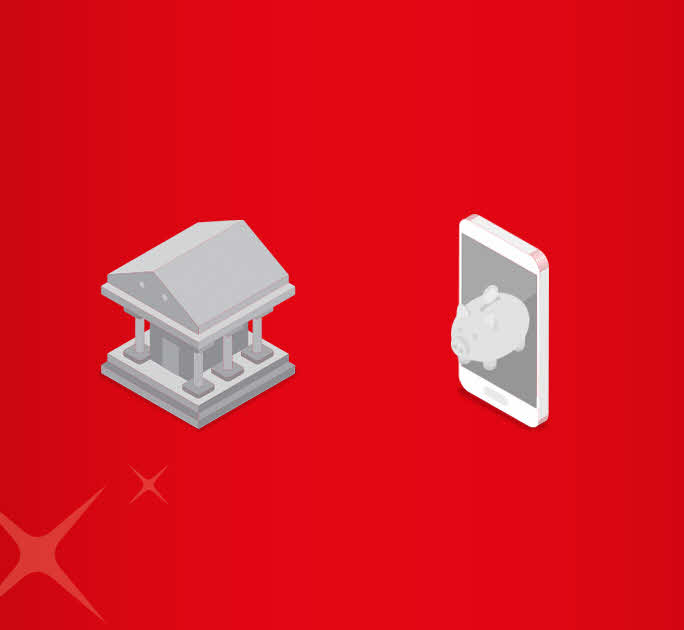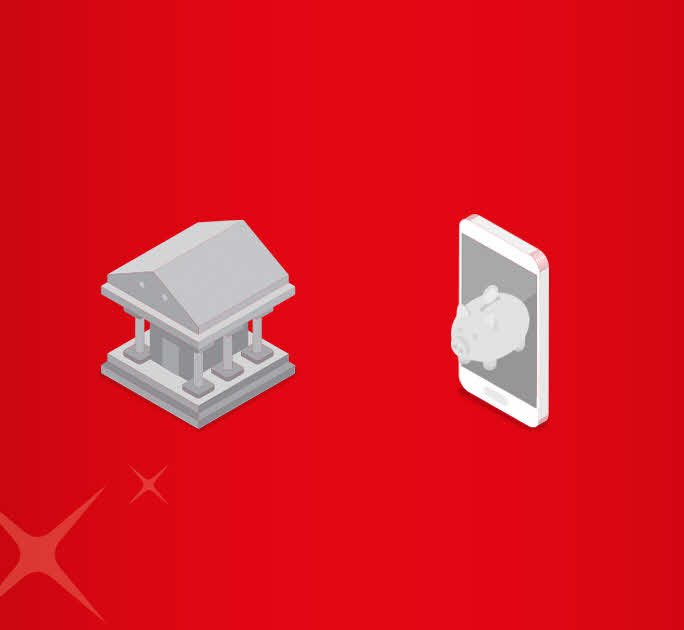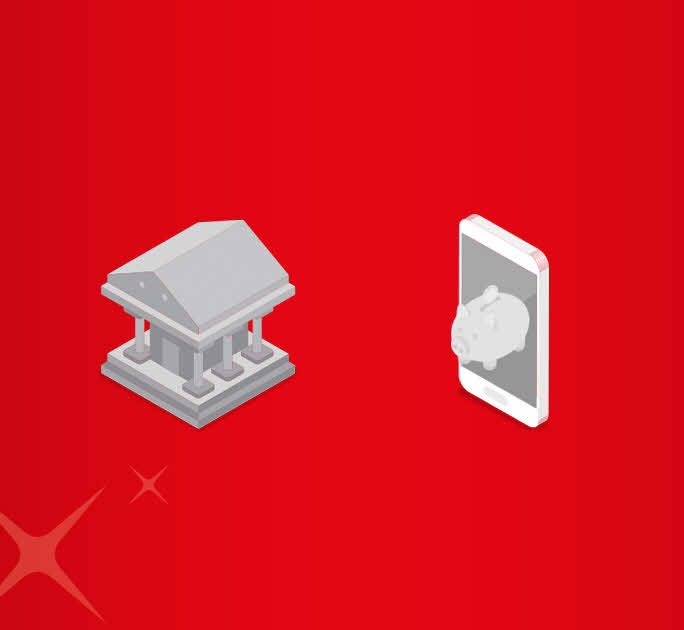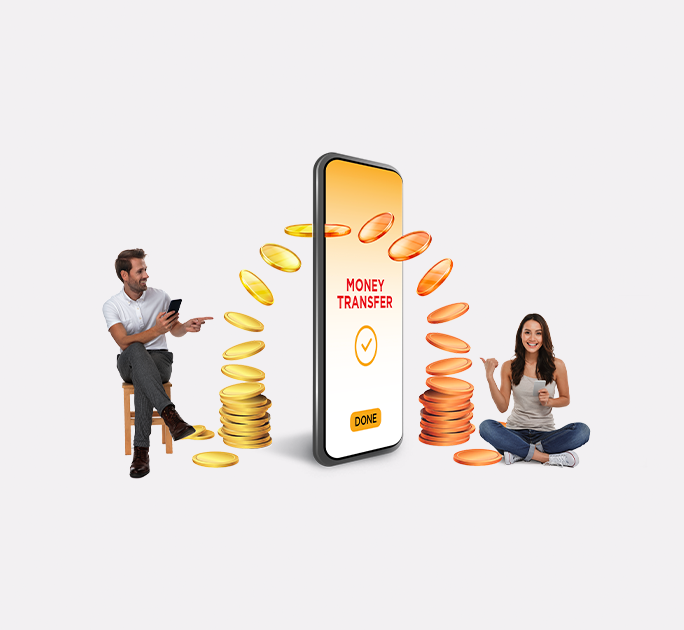- Save
- Invest
- Borrow
- Pay
- More
- Customer Services

What is Telegraphic Transfer (TT)?
Understand telegraphic transfer meaning and how it works
Key Takeaways
- Telegraphic transfer (TT) was a fund transfer method used in the 1990s and typically required a TT form for processing.
- It was primarily used for quick international money transfers, where banks issued a TT receipt as proof of transaction.
- Today telegraphic transfer refers to a broad set of methods of money transfer including wire transfer and SWIFT transfer, often documented through a TT copy for recordkeeping.
- It can take between 1-5 business days to reach the beneficiary's account.
- The financial institutions involved in the international money transfer will charge a fee to facilitate the transfer.
- The money is converted into the currency of the beneficiary bank's country at the prevailing exchange rate.
- The financial institutions involved will charge a markup on the exchange rate.
What is a Telegraphic Transfer?
A telegraphic transfer (TT) is an electronic method of sending money from one bank account to another, usually for international transactions. The sender fills a TT form to initiate the process. The transfer is routed through the SWIFT network or correspondent banks and typically takes 1–5 business days to reach the beneficiary.
With digital banking today, whether you want to open a savings account online or transfer funds internationally via telegraphic transfer, banks provide secure and convenient options.
How Telegraphic Transfer Works
When a customer initiates a telegraphic transfer, the bank follows a structured process to ensure secure and timely delivery of funds. This section explains how telegraphic transfer works from the bank’s perspective.
- Receiving the Transfer Request
The bank collects the transfer details through a TT form, including the beneficiary’s account information, bank codes, and the amount to be sent. - Verification and Authorization
The bank verifies the information, ensures sufficient funds are available, and authorizes the transfer. Customers can often initiate TT payments directly from their savings account online, making the process faster and more convenient. - Routing Through the SWIFT Network
The transfer instruction is sent securely via the SWIFT network. For international transfers, the funds may pass through correspondent banks that facilitate currency conversion and cross-border settlement. - Currency Conversion
If the transfer involves different currencies, the bank converts the funds at the prevailing exchange rate and applies any applicable markup. - Confirmation and Recordkeeping
Once the beneficiary receives the funds, the bank issues a digital or physical TT copy as proof of the transaction. - Timeline
From processing to completion, telegraphic transfers typically take 1–5 business days.
Advantages of Telegraphic Transfer
Telegraphic transfers provide a fast, secure, and reliable way to move funds internationally. Here are the key advantages of telegraphic transfer:
- The child will receive the funds quickly within 1-5 business days. In case the child needs money for moving houses the following week, they won't have to wait a long time to receive the funds to pay for it.
- Since it is electronic, it is a safe and secure mode of sending money.
- It can be easily tracked, eliminating the need to figure out how much money was sent, and when was it sent.
- Transfer of funds can be initiated from anywhere, at any time.
Types of Telegraphic Transfers
Telegraphic transfers can be categorized based on the method and route used to send funds:
- Domestic Telegraphic Transfer
Transfers conducted within the same country, usually routed through local banks and clearing systems. A TT form is generally used to initiate the transfer. - International Telegraphic Transfer
Transfers sent across borders, typically processed through the SWIFT network and may involve correspondent banks for currency conversion and settlement. - Wire Transfer
A type of telegraphic transfer where funds move electronically between banks, often in real time or within the same day for domestic transactions. A TT receipt may be issued as proof of completion. - SWIFT Transfer
A widely used international telegraphic transfer routed via the Society for Worldwide Interbank Financial Telecommunication (SWIFT) network for secure, standardized cross-border payments.
Common Uses of TT Payments
Telegraphic transfers (TT payments) are widely used for fast and secure fund transfers, both domestically and internationally. Some common applications include:
- Business Transactions
Companies use TT payments to settle invoices with suppliers, pay overseas vendors, or transfer funds between branch offices in different locations. - International Trade
TT payments are a preferred method for importing and exporting goods, ensuring timely and traceable payment to foreign suppliers. - Personal Remittances
Individuals often use TT payments to send money to family members abroad, pay for tuition fees, or cover living expenses. - Investment and Property Purchases
TT payments facilitate transferring funds for purchasing property, making foreign investments, or subscribing to overseas financial instruments. - Emergency Fund Transfers
When urgent access to funds is needed internationally, TT payments provide a secure and reliable option.
Costs involved in Telegraphic Transfers
Sending money through a telegraphic transfer involves more than just the transfer amount. Banks and financial institutions charge fees and apply exchange rate markups to cover processing and routing costs. By being aware of these charges helps you plan your transfer efficiently.
Telegraphic Transfer Fees
- Senders fill out a TT form to initiate the transfer.
- Fees vary by financial institution, transfer route, and whether the transaction is domestic or international.
- International transfers generally cost more than domestic transfers.
- Funds may pass through intermediary banks, each potentially charging additional fees.
- Some banks may waive fees for specific routes.
- Senders can usually choose how fees are handled:
- Deducted from the sender’s account, or
- Deducted from the amount received by the beneficiary.
- The bank issues a TT receipt once the transfer is completed.
Telegraphic Transfer Exchange Rate
- International transfers require conversion into the recipient’s local currency (e.g., INR to USD).
- Conversion uses the prevailing exchange rate.
- Financial institutions apply a markup on top of the base exchange rate.
- While base rates are similar across banks, markup amounts vary, affecting the total cost.
What Information Is Needed for a Telegraphic Transfer (TT)?
To initiate a telegraphic transfer successfully, you need to provide accurate details about the beneficiary and the transfer. Typically, the required information includes:
- Beneficiary’s full name as per their bank account
- Beneficiary’s complete bank account number or IBAN
- Bank name and branch address
- SWIFT/BIC code of the beneficiary bank
- Amount to be transferred
- Currency in which the transfer should be made
- Purpose of the transfer (e.g., tuition, personal remittance, business payment)
Providing complete and correct information helps avoid delays, rejected transfers, or additional charges.
Telegraphic Transfer Documentation (Form, Copy & Receipt)
Telegraphic transfers involve proper documentation to ensure accuracy and traceability:
- TT Form: The sender fills out this form with all transfer details. It can be completed at the bank branch or online if the bank provides digital TT services.
- TT Copy: After processing, the bank may provide a copy of the TT as proof of the transaction. This includes details such as the transfer amount, date, and beneficiary information.
- TT Receipt: Once the transfer is executed, a receipt is issued confirming that the funds have been sent. This serves as official proof for recordkeeping or audits.
Having these documents ensures transparency and allows you to track the transfer until the funds reach the beneficiary.
Conclusion
Telegraphic transfers have made sending money across borders fast, secure, and convenient. Whether it is supporting family abroad, paying tuition, or handling business transactions, a reliable TT service ensures your funds reach the beneficiary safely. You can open a savings account online with DBS Bank to access international transfers, digital banking, and competitive interest rates, all from the comfort of your home.
Frequently Asked Questions – What is Telegraphic Transfer (TT)?
-
Are same-day telegraphic transfers possible?
Yes, on specific routes same-day telegraphic transfers are possible provided the international fund transfer request has been submitted before the cut-off time. You can find out the cut-off times for various zones on the bank's website.
-
What is an 'Intermediary Bank' or 'Correspondent Bank'?
The banks that help facilitate the international money transfer between the sending bank and final beneficiary bank are called Intermediary or Correspondent banks.
-
What happens if I submit the wrong beneficiary details?
In case you submit incorrect beneficiary details such as the wrong name, account number, or bank code, the telegraphic transfer may be rejected by the bank. This could delay the transaction, and the funds may be returned to your account after deduction of any applicable processing fees. It is therefore important to double-check all beneficiary information before initiating a TT.











